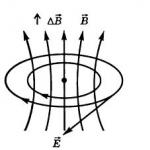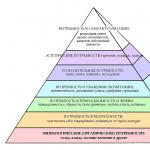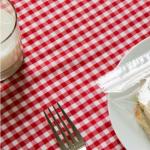Today there is a wide variety of building materials from which you can make high-quality and durable partitions in an apartment or private house. But often the choice of a specific material depends on the type of structure of the building. If the floor consists of reinforced concrete slabs between floors, then it is important to make the interior partitions as light as possible.
The most optimal materials from which interior partitions can be made are lightweight ones, but today masonry materials such as gypsum block and foam block are of considerable interest. Various blocks are a new means for quickly and inexpensively constructing partitions in an apartment or private house, however, during the work, nuances arise that must be observed without fail. First of all, let's look at how to lay gypsum blocks on the solution.
Choosing glue or solution

First of all, let's find out what solution is needed for laying gypsum blocks. If you don’t have enough money for a special gypsum-based acrylic adhesive, since it is quite expensive, then you can use regular tile adhesive or cement mortar in a ratio of 1:3 and add PVA glue to it. When thoroughly mixed, a very elastic and finely dispersed mixture is obtained, which is easily spread with a spatula. Its excess is squeezed out when the block is installed in place. The solution is much easier to work with because its setting speed is much slower than gypsum adhesive, which can only be worked with during the first 60 minutes.
The question often arises: “How to lay gypsum blocks with glue?” when the need arises to build a partition. In fact, glue is the best means for constructing partitions from gypsum blocks. It hardens faster, which allows for complete installation with all necessary communications in just one day. And after just an hour, the surface can be easily cleaned using any mechanical method, but this is usually not required if tongue-and-groove slabs were used.
Slabs or block
Before starting to describe the technology for constructing a partition, you should decide on the choice of the type of material and its advantages. A gypsum wall block is, as a rule, a perfectly rectilinear parallelepiped on all sides made from a mixture of gypsum, cement and plasticizer. Each product acquires good geometric parameters due to production technology without the use of high temperatures, such as, for example, in the production of foam-gas-silicate blocks. But at the same time, gypsum blocks have better thermal conductivity and strength. High thermal insulation properties of the material were achieved through the use of sawdust, which also strengthens the structure of the block.
Good strength indicators made it possible to produce tongue-and-groove slabs, that is, blocks 8-10 cm thick and dimensions 66.7 x 50 cm with a groove and tongue for joining each other during installation. This is the main difference between slabs and blocks.
Gypsum tongue-and-groove partitions turn out to be perfectly smooth on both sides and during the installation process there is a low probability of curvature from the level even by a millimeter.

If we compare the price parameters, then laying partitions from tongue-and-groove slabs will cost a little more, because their cost is higher than the blocks. But one cannot fail to notice the benefits of working with them. The ridge fits securely into the groove and at the same time forms a high-quality connection of all the blocks with each other without the slightest deviation along any planes.
Although laying gypsum blocks will be cheaper, it will require more adhesive mixture. It is more difficult to align it on planes, which is fraught with curvature and distortions. The main thing in technology is maintaining the levels, so the block wall turns out smooth and of high quality. But you should take into account the advantage - a wall made of gypsum blocks is usually thicker and has better strength and sound insulation characteristics. As for weight, of course, it is heavier, so hollow gypsum blocks can be used as an alternative.
Gypsum block installation technology

There are several technologies for laying gypsum blocks. Some people prefer to use glue, while others prefer to use a solution. In fact, you can use both methods, but you will only need to meet certain conditions. Before considering how to lay gypsum blocks on one or another means, you should familiarize yourself with the general technology for performing a full range of work.
To make it clearer how to lay gypsum blocks, see the photo below.
Interior partitions made of tongue-and-groove slabs must be smooth and durable. And to achieve this, it is necessary to follow the installation technology.
In order for the installation of the tongue-and-groove partition to be of high quality, it is necessary to allow the blocks to get used to the temperature at which they will be placed in place. To do this, it is recommended to bring all the material into the room and give it at least 1 day to get used to it. The block, due to the filler in the form of sawdust and plasticizer, expands slightly with increasing temperature, taking on its final shape. Compliance with this condition will eliminate the possibility of cracks occurring the next day after installation of the blocks.
The first step is to mark the location where the partition will be installed. Here you can use either a regular tape measure, a plumb line and a long level, or a laser device. When performing large-scale work, it is advisable and much more efficient to use a laser level.
Well, at home, when there is nowhere and there is no need to rush, it is quite possible to get by with familiar tools. A tongue-and-groove partition, as a rule, is perfectly flat on all sides, so no plaster or plasterboard is required. Unless, of course, additional insulation is needed. Therefore, when marking, the craftsman takes this into account and deviates from the original line a distance equal to the thickness of the additional finishing.

Installation of tongue-and-groove partitions should be carried out only on a high-quality and conscientiously prepared surface. Therefore, using a broom, brush and other tools, we carefully sweep the area where the partition will be installed. Also, the installation of partitions made of tongue-and-groove slabs provides for a perfectly flat surface. To obtain this, the mechanically cleaned area is treated with concrete contact (acrylic or any other primer for concrete). It is recommended to do this in two layers for better adhesion of the leveling layer.
If a house has reinforced concrete floors, this does not mean that the surface is perfectly flat. In order to correctly lay gypsum blocks, deviations should not exceed more than 3 mm; in other cases, the surface must be leveled.

If the leveling layer turns out to be very thin, then a self-leveling mixture can be used. To do this, you need to install something like formwork and fill it with mortar, using a special roller with needles to roll out the mortar evenly over the entire plane.
If a tongue-and-groove partition is installed on an excessively curved surface, it can be leveled using a semi-dry screed. To do this, mix grade 500 cement and sand sifted through a fine sieve in a ratio of 1:3. Next, water is added and the solution is mixed until a uniformly moist (not wet) mixture is obtained. The process should not be described further, because it is not from this topic. After leveling with a semi-dry screed and completely drying (1-2 days), the surface must be treated again with soil (concrete contact). That's it, the surface is ready, you can start installation.

It is necessary to ensure that the partition made of tongue-and-groove slabs does not vibrate or resonate, thereby increasing the soundproofing properties of the room. To do this, it is necessary to provide a damping layer at the point of contact with the floor and wall. To accomplish this, you can use a cork backing tape 15 cm wide and 4 mm thick. It will compensate for all kinds of fluctuations and the degree of expansion of the partition when the temperature changes.
The tape can be installed using the same glue as the boards themselves. To do this, a certain amount of it is diluted; it is better not to mix it with water, because it will still become unusable even before laying the blocks. Using a spatula, spread a thin layer onto the prepared surface, carefully roll out the tape and press it to the base. You need to let the glue harden for at least 1 hour.
That's it, the damping layer is ready, you can install tongue-and-groove slabs for partitions.
For better orientation relative to the level, you can use physical slats, that is, attach the guides to the wall and floor on both sides of the partition with dowels. This will minimize the likelihood of deviation during installation.
At the next stage, we will look at how to correctly lay gypsum blocks. For more reliable fastening of the slabs to each other and a better geometry of the wall, the slabs must be laid with the groove up. To do this, use a regular hand hacksaw to carefully remove the lower ridge. Here it is important to leave the surface perfectly flat, without protrusions, so that it fits tightly onto the damper substrate.
The mortar for laying gypsum blocks or glue should be spread using a spatula directly onto the tape and then onto the blocks. A little is required, because when joining, the excess will still be squeezed out by the weight of the slab.
Shrinking of each plate is carried out using a hammer with a rubber pad or through a block until the surfaces are in complete contact.

The tongue-and-groove slabs must be laid in a checkerboard pattern or with each row offset relative to each other by no less than 1/3 of its width. This will make the partition very durable and resistant to any impact.
The installation of tongue-and-groove partitions necessarily includes its fastening to the wall and floor using perforated corners. It can be attached to blocks with ordinary wood screws, to the floor and walls using dowels or anchors. Fastening should be done at least every other row or block in a row.
The video attached below will be an excellent instruction and clarification for the article.
Doorways in the partitions of their tongue-and-groove slabs

Installing a partition made of tongue-and-groove slabs cannot do without door or window openings. Moreover, if the height of the partition is no more than 3 m and only 1 row of slabs will be laid over an opening up to 80 cm wide, then lintels do not need to be used. It is enough to make a small half-frame with the width of the opening from wooden blocks and attach it to the slabs with self-tapping screws. Next, the next row of blocks is laid with periodic quality control of the surfaces using a level.
Installing tongue-and-groove slabs for partitions has its advantages. This material has a convenient configuration and relatively low weight, which greatly simplifies installation work. The plates are also equipped with a special lock, which ensures their secure fastening.
Important! The arrangement of interior partitions using tongue-and-groove slabs occurs very quickly (almost in a matter of hours). To achieve such installation speed, you need to have extensive experience and perfect mastery of the technology.

The cost of erecting walls from tongue-and-groove slabs in the company San Sanych
If you are looking for craftsmen to install walls made of tongue-and-groove blocks, pay attention to our company. We have been working in Moscow for a long time and have received many positive reviews. This happened due to a responsible approach to all operations. We carefully listen to the customer’s wishes and implement them taking into account the requirements of regulatory documentation. Only trusted companies that provide the best quality at a low price deliver building materials directly to the site. The cost of installation work will definitely pleasantly surprise you. Prices primarily depend on the amount of labor involved and materials used.
Preparatory stage
Preparing the room for installation of tongue-and-groove blocks occurs as follows:
- the floor and walls in the areas where the future partition is adjacent must be perfectly flat. Otherwise, the desired quality cannot be achieved;
- all existing irregularities are eliminated by filling the screed and grinding. It is also mandatory to seal cracks on the base;
- the surface of the walls, ceiling and floor is primed;
- markings are applied that reflect the location of the future wall.
Laying blocks
Before installing the first row of slabs that are intended for this purpose, the legs are cut off. This will ensure they fit snugly to the floor. To fix tongue-and-groove slabs, a special adhesive composition is used. It is applied to all their ends to securely fasten them together. Also, a special lock is used for this, which implies the presence of grooves on the surface of the blocks. After installing the first row, it is secured to the wall and floor using dowels. Then the installation continues according to the same scheme.
Tongue-and-groove blocks are a building material that is used for installing interior partitions. They are made from gypsum by low-temperature processing of natural gypsum, which is why their second name is gypsum slabs. This building material is characterized by high dimensional accuracy.
Types of tongue-and-groove blocks
There are ordinary and moisture-resistant gypsum boards. The gypsum board groove can have a trapezoidal or rectangular shape. There are solid and hollow plasterboards. For the construction of walls indoors with dry or normal humidity conditions (apartments, hotels, offices, schools, industrial buildings), ordinary gypsum boards are used, and for rooms with high humidity - moisture-resistant gypsum boards. Moisture-resistant gypsum boards contain hydrophobic additives.
Gypsum slabs are a very affordable building material. And thanks to the high quality of their front surface, there is no need to spend a lot of money on finishing work. A plasterboard wall can be covered with wallpaper, painted or tiled with ceramic tiles.
Installation from gypsum is very simple and easy. And due to its low price, the use of gypsum boards provides a significant advantage over the construction of interior brick walls in apartments or country houses. Another advantage of gypsum boards is their resistance to fire.
How to install tongue-and-groove blocks
In order to build one square meter of partition, you will need 5.5 gypsum blocks and approximately 1.5 kg of glue. In order to enhance sound insulation in the place where the partition adjoins the wall, use a cork gasket. If there are no strict requirements for sound insulation, then the blocks can be mounted to the enclosing structures directly on the adhesive mortar.
First, the surface on which the partition from tongue-and-groove blocks will be built is cleaned of dust and dirt. It is built before the finished floor is installed. Then markings are made using a cord or laser level. The marks are transferred to the walls using a plumb line. If the floor is uneven, you need to apply a leveling layer. Styling can be done no earlier than in a day.
Before starting installation, you need to prepare an adhesive solution, which was recommended by the gypsum board manufacturer (usually it is quite affordable). To do this, the dry mixture must be poured into a bucket with the required amount of water. Then mix thoroughly and leave for 2-3 minutes. It is necessary to take into account that the viability of the composition is only 1 hour, and the glue consumption per 1 m2 of masonry is only 1.5 kg.
Foreman's advice: When mixing glue, use only a clean container and clean cold water.
In order for the blocks in the masonry to adhere better, they must be laid with the groove facing up. To do this, the ridge is removed from the tongue-and-groove blocks of the lowest row of masonry. The laying of the first row is done according to the level and carefully leveled in one plane. When laying the next rows, the glue is applied and distributed along the grooves of the already laid row. The vertical seam of each tongue-and-groove masonry block also needs to be filled with an adhesive solution. The thickness of the seams should not exceed 2 mm. During installation, the gypsum blocks in the masonry are settled using a rubber hammer. Laying is done in staggered steps - at least a third of the length. Additional elements are easily obtained using a manual stove. The elements of the last row of masonry are sawn at an angle so that there are no voids left between the partition and the ceiling.


Foreman's advice: if there are potholes on the tongue-and-groove blocks, they need to be filled with putty.
If you need to make an opening in the partition, the width of which does not exceed 800 mm, and above which there is only one row of masonry, then it is not necessary to install a lintel. In this case, it will be enough to install and leave the support in the opening until the glue dries.
If the width of the opening exceeds 800 mm, then a metal or wooden lintel must be installed above the opening. To give the outer corners of the structure additional rigidity, you need to reinforce them with a metal profile. Internal corners can be strengthened with reinforcing tape.

Installation of gypsum boards can be carried out not only by a professional, but also by a novice builder. At the same time, an experienced worker can make 20 m2 of wall per shift.
Foreman's advice: when attaching objects that exert a light load (mirrors or bookshelves) to a wall made of tongue-and-groove blocks, you can use wedging corrosion-resistant dowels. When installing wall-mounted cabinets or sanitary fixtures, it is necessary to use corrosion-resistant bolts that go right through the wall.
Gypsum slabs are an affordable, cost-effective building material for building walls indoors. To build a wall from gypsum boards, you do not need special knowledge, you just need to watch a detailed video of laying gypsum blocks.
Video
Remodeling an apartment is a common thing; all that remains is to decide on the material and technology for constructing new walls and partitions. We suggest paying attention to tongue-and-groove gypsum boards - a practical, affordable and universally applicable material.
Tongue-and-groove slabs and their scope of application
Tongue-and-groove slabs (GGP) are rectangular blocks of gypsum fiber 80 or 100 mm thick. The size of the slabs is standard - height 500 mm, width 667 mm. To strengthen the connection between the plates, their edges are made in the form of grooves and ridges. The technology allows the construction of up to 4 m 2 of partitions per hour.

Standard slabs are used in rooms with normal humidity conditions; moisture-resistant GGPs are used for bathrooms and baths. The plate can be either solid or hollow with horizontal through holes with a diameter of 40 mm. A hollow slab is not only characterized by reduced lightness and thermal conductivity; when laying slabs in one row, the cross-sectional alignment of the holes is guaranteed to be at least 90%, which allows the cavities to be used as technical channels for laying electrical wiring or pipes.
Preparing the installation site
PGPs are universal in use and can be installed in almost any construction environment. Due to their low weight, they do not require a foundation and can be installed directly on a screed or even on a solid wooden floor.

The only requirement for the location of the partition is that the base should not have a horizontal height difference of more than 2 mm per 1 meter. If the floor in the room does not meet these requirements, then a leveling screed 20-25 cm wide is made.
The surface of both the screed and the floor must be coated several times with a deeply penetrating primer, then dried and cleaned. It is optimal to install the PGP before plastering the load-bearing walls, so the finishing coating will be more seamless.
Damper pad device
To compensate for thermal expansion and settlement of the building, a tape of elastic material is laid at the junction of the partitions with the floor and walls. This could be rubber, balsa wood or silicone tape.

The base is covered with a thin layer of GGP glue and the tape is laid. It takes 6-8 hours to harden, after which you can begin constructing the partition.
Installation of the first row
Installation of PGP is carried out strictly in rows, starting from the bottom. The first row is basic and must be correctly oriented in space, vertically and horizontally. The most common error during installation is “waviness” of the partition, which occurs due to a slight displacement in the grooves. To eliminate this phenomenon, when laying each slab, you need to use a rule strip and check the general plane of the partition against it.

The first row should be laid from the corner. The area where the slab touches the floor and wall is covered with GGP glue, then the block is installed with the ridge up and its position is leveled. It is convenient to use a rubber mallet to move the slabs. Be sure to fasten the first block to the wall and floor using L-shaped plates, the role of which is successfully performed by direct hangers. To use them, you need to cut off the toothed comb from the edges and bring the thickness of the plate to the width of the comb. The plates are first attached to the base using quick-installation dowels with a length of 80 mm, then to the slab with black self-tapping screws no less than 60 mm long.

Subsequently, the slabs are attached through one side: on one side to the floor, on the other - to the previous slab, with a preliminary coating of the joint with a thin layer of glue and strong pressing. To control the placement of slabs according to the project, it is convenient to use lacing or a laser level. It would also be a good idea to mark the partition on the floor and walls indicating the locations for the doorways.
Construction of a partition and adjoining to load-bearing walls
The second and subsequent rows are laid with a seam offset of at least 150 mm. The slab is located strictly in the plane of the partition thanks to the tongue-and-groove connection. It is enough to control the horizontal installation level and lateral tilt. The outer slabs are attached to the load-bearing walls with L-shaped plates or reinforcement rods 8 mm thick.

To move the joints and remove the edge of the partition, you will need to trim the additional elements to the exact size. It is best to use a regular wood hacksaw with a thick blade and set teeth. If the partition is not adjacent to another wall, its end can be made perfectly flat by increasing the thickness of the glue in the vertical seam from 2 to 6-8 mm.
Construction of doorways
The vertical edges of the openings do not require additional reinforcement. To lay slabs over an opening with a width of less than 90 cm, it is necessary to build a supporting U-shaped strip, which can be removed after the glue has dried.

Openings 90 cm wide or more require laying on top of a series of support beam slabs - 40 mm boards or 70 mm reinforced CD profile. To reach one level, it is recommended to trim the slabs laid on top of the crossbar. The jumper is placed into the partition at least 50 cm on each side.
Corners and intersections of partitions
At the corners and junctions of partitions, it is necessary to strengthen the masonry. To do this, the slabs are laid across a row, alternately covering the joints. In places where the relaying occurs, it is necessary to remove the ridges; they are cut with a hacksaw into sections of 4-5 cm and chipped with a chisel.

The connection can be further strengthened with sections of straight hangers or welded T-shaped elements made of smooth reinforcement. In any case, additional trimming of the ridge to the required distance will be required.
Top row bookmark
When laying the top row, the largest amount of waste is generated due to cutting to the desired height. They can be glued together and placed in voids, since this row of partitions does not experience a strong functional load.
Electrical wiring is usually laid in the voids of the top row, so it is important to prevent glue from getting into the holes. To facilitate cable pulling, you can additionally drill holes or make transverse holes with a diameter of 45 mm.

When laying the top row, it is necessary to maintain a gap from the ceiling of at least 15 mm to compensate for the deflection of the ceiling during settlement. The top row also needs to be attached to the floor of every second slab. Upon completion of installation, the remaining space is filled with polyurethane foam.
Interior finishing options
With proper installation of the PGP, the curvature of the surface is no more than 4-5 mm per meter of plane. This is an acceptable indicator for wallpapering walls. The outer corners of the partitions must be protected with a perforated corner profile placed on the starting putty. The internal corners are also puttied, strengthening them with sickle. The joints between the plates are cleaned with an 80 grit abrasive mesh, then the entire surface is coated twice with a high-adhesion primer.

Leveling walls made of PGP can be done with any finishing putty, but the coating will need to be reinforced with fiberglass mesh. Often, puttying partitions is used only to hide seams; as a rule, the layer does not exceed 2-4 mm. The tiles can be laid directly on the surface of the PGP with preliminary priming.
During major repairsredevelopment of an apartment is a common thing; all that remains is to decide on the material and technology for constructing new walls and partitions. We suggest paying attention to tongue-and-groove gypsum boards - a practical, affordable and universally applicable material.
Tongue-and-groove slabs and their scope of application
Tongue-and-groove slabs (GGP) are rectangular blocks of gypsum fiber 80 or 100 mm thick. The size of the slabs is standard - height 500 mm, width 667 mm. To strengthen the connection between the plates, their edges are made in the form of grooves and ridges. The technology allows the construction of up to 4 m 2 of partitions per hour.

Standard slabs are used in rooms with normal humidity conditions; moisture-resistant GGPs are used for bathrooms and baths. The plate can be either solid or hollow with horizontal through holes with a diameter of 40 mm. A hollow slab is not only characterized by reduced lightness and thermal conductivity; when laying slabs in one row, the cross-sectional alignment of the holes is guaranteed to be at least 90%, which allows the cavities to be used as technical channels for laying electrical wiring or pipes.
Preparing the installation site
PGPs are universal in use and can be installed in almost any construction environment. Due to their low weight, they do not require a foundation and can be installed directly on a screed or even on a solid wooden floor.

The only requirement for the place where the partition will be erected is that the base should not have a horizontal height difference of more than 2 mm per 1 meter. If the floor in the room does not meet these requirements, then a leveling screed 20–25 cm wide is made.
The surface of both the screed and the floor must be coated several times with a deeply penetrating primer, then dried and cleaned. It is optimal to install the PGP before plastering the load-bearing walls, so the finishing coating will be more seamless.
Damper pad device
To compensate for thermal expansion and settlement of the building, a tape of elastic material is laid at the junction of the partitions with the floor and walls. This could be rubber, balsa wood or silicone tape.

The base is covered with a thin layer of GGP glue and the tape is laid. It takes 6–8 hours to harden, after which you can begin constructing the partition.
Installation of the first row
Installation of PGP is carried out strictly in rows, starting from the bottom. The first row is basic and must be correctly oriented in space, vertically and horizontally. The most common installation error is “waviness” of the partition, which occurs due to a slight displacement in the grooves. To eliminate this phenomenon, when laying each slab, you need to use a rule strip and check the general plane of the partition against it.

The first row should be laid from the corner. The area where the slab touches the floor and wall is covered with GGP glue, then the block is installed with the ridge up and its position is leveled. It is convenient to use a rubber mallet to move the slabs. Be sure to fasten the first block to the wall and floor using L-shaped plates, the role of which is successfully performed by direct hangers. To use them, you need to cut off the toothed comb from the edges and bring the thickness of the plate to the width of the comb. The plates are first attached to the base using quick-installation dowels with a length of 80 mm, then to the slab with black self-tapping screws no less than 60 mm long.

Subsequently, the slabs are attached through one side: on one side to the floor, on the other - to the previous slab, with the joint first coated with a thin layer of glue and pressed firmly. To control the placement of slabs according to the project, it is convenient to use lacing or a laser level. It would also be a good idea to mark the partition on the floor and walls indicating the locations for the doorways.
Construction of a partition and adjoining to load-bearing walls
The second and subsequent rows are laid with a seam offset of at least 150 mm. The slab is located strictly in the plane of the partition thanks to the tongue-and-groove connection. It is enough to control the horizontal installation level and lateral tilt. The outer slabs are attached to the load-bearing walls with L-shaped plates or reinforcement rods 8 mm thick.

To move the joints and remove the edge of the partition, you will need to trim the additional elements to the exact size. It is best to use a regular wood hacksaw with a thick blade and set teeth. If the partition is not adjacent to another wall, its end can be made perfectly even by increasing the thickness of the glue in the vertical seam from 2 to 6–8 mm.
Construction of doorways
The vertical edges of the openings do not require additional reinforcement. To lay slabs over an opening with a width of less than 90 cm, it is necessary to build a supporting U-shaped strip, which can be removed after the glue has dried.

Openings with a width of 90 cm or more require laying on top of a series of support beam slabs - 40 mm boards or 70 mm reinforced CD profile. To reach one level, it is recommended to trim the slabs laid on top of the crossbar. The jumper is placed into the partition at least 50 cm on each side.
Corners and intersections of partitions
At the corners and junctions of partitions, it is necessary to strengthen the masonry. To do this, the slabs are laid across a row, alternately covering the joints. In places where the relaying occurs, it is necessary to remove the ridges; they are cut with a hacksaw into sections of 4–5 cm and chipped with a chisel.

The connection can be further strengthened with sections of straight hangers or welded T-shaped elements made of smooth reinforcement. In any case, additional trimming of the ridge to the required distance will be required.
Top row bookmark
When laying the top row, the largest amount of waste is generated due to cutting to the desired height. They can be glued together and placed in voids, since this row of partitions does not experience a strong functional load.
Electrical wiring is usually laid in the voids of the top row, so it is important to prevent glue from getting into the holes. To facilitate cable pulling, you can additionally drill holes or make transverse holes with a diameter of 45 mm.

When laying the top row, it is necessary to maintain a gap from the ceiling of at least 15 mm to compensate for the deflection of the ceiling during settlement. The top row also needs to be attached to the floor of every second slab. Upon completion of installation, the remaining space is filled with polyurethane foam.
Interior finishing options
With proper installation of the PGP, the curvature of the surface is no more than 4–5 mm per meter of plane. This is an acceptable indicator for wallpapering walls. The outer corners of the partitions must be protected with a perforated corner profile placed on the starting putty. The internal corners are also puttied, strengthening them with sickle. The joints between the plates are cleaned with an 80 grit abrasive mesh, then the entire surface is coated twice with a high-adhesion primer.

Leveling walls made of PGP can be done with any finishing putty, but the coating will need to be reinforced with fiberglass mesh. Often, puttying partitions is used only to hide seams; as a rule, the layer does not exceed 2–4 mm. The tiles can be laid directly on the surface of the PGP with preliminary priming.
http://www.rmnt.ru/ - siteRMNT.ru


















